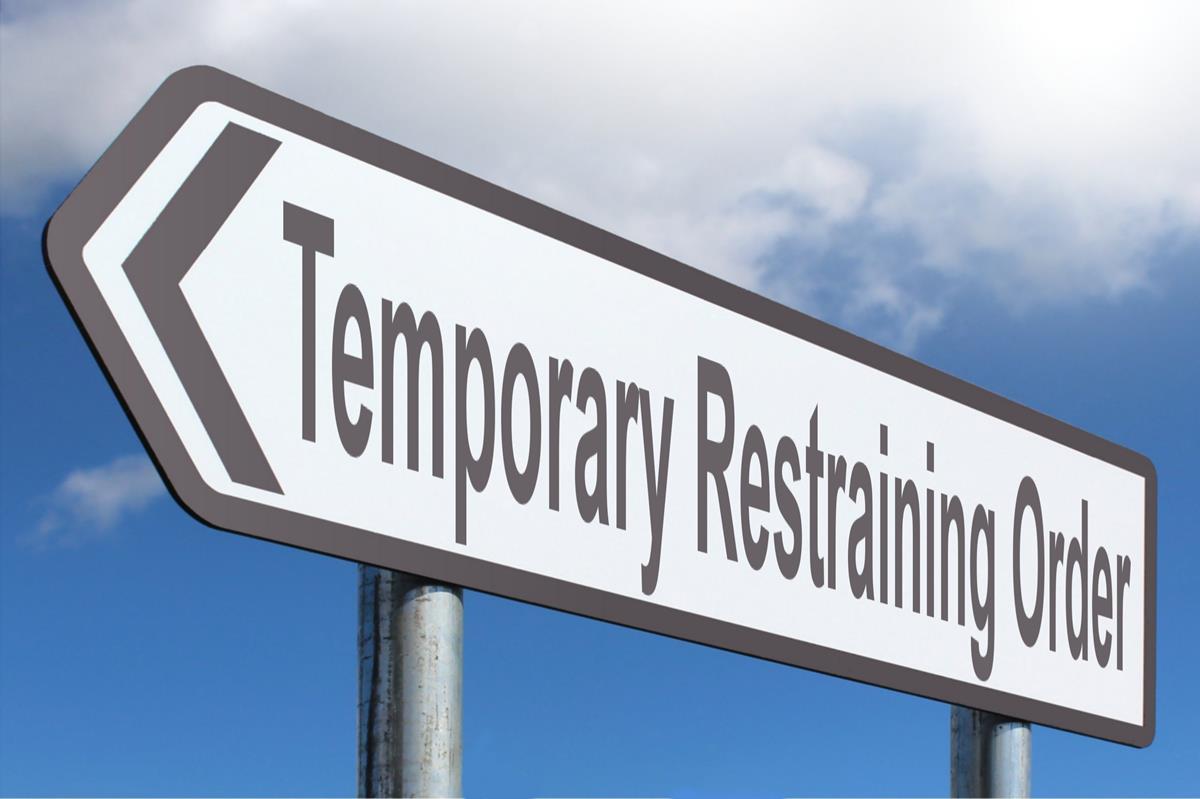
Buying a car is a significant investment, and while finding that perfect vehicle locally is always ideal, sometimes the best deal or the exact model you’re dreaming of lies beyond state lines. The lure of better prices due to regional demand, access to specific features, or even a rare classic can make shopping out of state incredibly tempting. In fact, finding a new or used vehicle for sale in a different state is relatively easy with today’s online resources.
However, crossing state lines to purchase a vehicle introduces a whole new layer of complexities. What seems like a fantastic deal can quickly turn into a $50,000 mistake if you overlook crucial steps and regulations. Each state plays by its own rules, from emissions laws and safety inspections to sales tax and title transfers, and navigating this patchwork can be daunting without the right information.
This in-depth guide is designed to empower you with the practical, actionable advice you need to make an informed decision and ensure a smooth, hassle-free out-of-state car purchase. We’ll break down the essential rules you must follow, starting with the critical research and negotiation phases, to help you avoid common pitfalls and drive away confidently with your ideal car.

1. **Thorough Research of the Car and its Value**Before you even consider reaching out to a seller or making the trip, intensive research is your most powerful tool. It’s not just about finding the car you want; it’s about confirming its worth and ensuring it’s a genuine opportunity. You need to gather as much information as possible to ensure the vehicle is truly worth the sales price.
This means leveraging tools like Kelley Blue Book, J.D. Power, and Edmunds to get an estimated market value based on the vehicle’s mileage and condition. Knowing what the car is truly worth gives you a strong foundation for negotiation. Additionally, searching for the same model from multiple dealers and sellers can provide valuable comparative data, which you can use to your advantage in the negotiation process.
If you’re not entirely sure which car you want to buy, begin your research by considering your specific needs, your budget, preferred car brands, and the key features that are non-negotiable for you. This foundational work helps narrow down your search and prevents you from falling for a flashy deal that doesn’t align with your long-term requirements. A deal isn’t truly a deal if the car doesn’t meet your fundamental expectations or ends up costing more in the long run.
Read more about: America’s Iconic Sports Car: Decoding the Most Problematic Corvette Models in History to Help You Buy Smart

2. **Obtain a Comprehensive Vehicle History Report**This rule is non-negotiable, especially when buying a used vehicle. A vehicle history report provides an invaluable wealth of information about a car, offering a transparent look into its past. It details critical aspects such as mileage, past accidents, service history, and the number of previous owners.
If you’re buying from a dealership, they typically provide this report. However, if you’re dealing with a private seller, you may need to specifically ask for it. Should a report not be provided, don’t hesitate to request the license plate or Vehicle Identification Number (VIN). With this information, you can independently obtain a report from reputable services like AutoCheck or Carfax.
This report is your first line of defense against hidden issues. It helps you look for potential red flags such as accident records, odometer tampering, or car title issues. It’s crucial to dig deeper if the VIN shows a salvage title or multiple past owners in a short time frame, as these could indicate significant underlying problems or a potentially troubled history that could affect the car’s reliability and resale value.
Read more about: Beyond the Dashboard: Unmasking the Shocking Data Collection Habits of Your Connected Car

3. **Contact the Dealership or Seller Effectively**Once you’ve done your initial research and identified a potential vehicle, establishing clear and effective communication with the dealer or seller is paramount before you consider making any travel arrangements. This initial contact is your opportunity to flesh out crucial details and ensure everyone is on the same page, preventing wasted time and effort.
During this communication, gather as much information as you can about the vehicle’s history and its current condition. Requesting additional photos and videos, along with any available service documentation, can significantly supplement the vehicle history report you’ve already obtained. These details provide a more granular view of the car’s true state, helping you to assess it remotely.
Furthermore, it’s vital to discuss logistical aspects, such as your intentions for getting the vehicle home. Clarify whether you plan to travel and pick up the vehicle yourself, or if you’ll arrange for it to be delivered. If delivery is an option you’re considering, inquire about the pricing early on to factor these potential costs into your total budget. Finally, if you’re planning an in-person visit, discuss the timing and be prepared that you may need to put down a deposit to secure the car and prevent it from being sold before your arrival.
Read more about: The Unexpected Urban Conundrum: Why Owning a Car in the City Can Become a Significant Liability

4. **Understand and Confirm Incentives**When purchasing a new or even a used car from a dealership, it’s important to recognize that incentives can vary significantly from state to state. What might be available in one state may look entirely different in another, or even be completely non-existent. This regional variation can play a major role in the final price you pay, making it a critical point to investigate.
Always confirm any and all incentives or rebates that are being offered, and crucially, get them in writing. This written documentation serves as your safeguard, ensuring that any promised savings are actually applied to your purchase. A useful strategy is to check the manufacturer’s website using both your local ZIP code and the ZIP code of the dealer where you’re shopping.
This dual-ZIP code check can reveal localized factory-to-dealer incentives that might not appear in broader national advertisements. You might uncover additional savings at that distant dealer, or even discover an incentive in your own neighborhood that could make a local deal unexpectedly more attractive. For private sales, however, incentives are typically not a factor.
Read more about: Unlock Up To 25% Off Your Car Insurance: The Essential Guide to Anti-Theft Devices That Slash Your Premiums
5. **Get a Detailed Pre-Purchase Inspection**This step is absolutely crucial, particularly when buying a used vehicle, whether from a dealer or a private owner. While a vehicle history report provides insight into the past, a pre-purchase inspection by a certified mechanic offers a current, expert assessment of the car’s mechanical health and overall condition. Looks can be deceiving, and a visually clean car doesn’t automatically mean a perfect engine or a trouble-free ride.
If you’re buying from a private party, it is highly recommended to hire an independent mechanic to perform a full vehicle inspection. This investment, typically ranging between $100 and $200, is a small price to pay to avoid potentially massive repair costs down the line. The mechanic can identify rust, engine issues, body damage, or mechanical/electrical problems that could significantly impact the vehicle’s value and your satisfaction.
Even with an out-of-state dealer, if the car is not a manufacturer-certified pre-owned vehicle, insist on an inspection or at least request documentation on past repairs and service records. While arranging an out-of-state inspection can be more challenging, it is definitely doable and provides immense peace of mind. Without this thorough check, you’re relying solely on photos and history reports, and not all accidents or repairs are always reported, leaving you vulnerable to hidden risks.
Read more about: Smart Shopper Alert: 10 Affordable Hatchbacks That Turn into Costly Service Demons After Seven Years

6. **Negotiate the Price Strategically**Negotiating the price is a critical part of buying any car, but it becomes even more important when buying out of state where you might be chasing a better deal. Before you even begin the negotiation, determine your preferred sales price and, equally important, the absolute maximum you are willing to pay. This clear boundary will guide your strategy and prevent emotional overspending.
Your initial research into the car’s market value (Rule 1) becomes invaluable here. If the vehicle is priced higher than the estimated market value or if you’ve found similar models for less in the same area, use this information to justify a more reasonable price. Any issues uncovered during the pre-purchase inspection (Rule 5), such as needed repairs, can also be leveraged to negotiate a lower sales price or to request that the seller covers the repair costs.
When dealing with a dealership, explore manufacturer incentives (Rule 4) and consider the option of a trade-in. Use valuator tools to get an accurate trade-in value for your current vehicle; detailing it and fixing minor issues can help you secure more money. Finally, know when to walk away. If the dealer or seller is unwilling to budge or meet your budget, don’t be afraid to end negotiations. Sometimes, walking away can even prompt them to accept your offer, especially if the vehicle has been listed for a while.
Read more about: Navigating the Crossroads: Key Legal and Policy Shifts Redefining the Trucking Industry in 2025

7. **Obtain a Full Summary of Costs and Fees**Before you commit to buying the car, it is absolutely essential to obtain a complete and detailed summary and breakdown of all costs and fees from the dealer. This is where hidden charges can quickly inflate the price and turn a seemingly good deal into a financial headache. Don’t simply rely on the advertised price; dig into every line item.
Request the window sticker or Monroney label for new cars, which lists official information including the VIN, standard, and optional equipment. For both new and used vehicles, meticulously check for the destination fee, all dealer fees, title costs, any “extras” like window tint or fabric protection, and an initial estimate of taxes. It’s crucial to challenge anything you don’t need or understand.
Remember that negotiation isn’t just about the car’s base price; it extends to these additional fees. You have the right to ask about and potentially negotiate away certain dealer-added options or services that aren’t mandatory. This meticulous review of all costs upfront ensures transparency and prevents any unwelcome surprises at the final stage of your purchase.
Read more about: Luxury Car Owner’s Headlight Nightmare: Unmasking the Shocking Costs Behind Modern Automotive Lighting

8. **Understand and Prepare for State-Specific Sales Taxes**One of the most common misunderstandings when buying a car out of state revolves around sales tax. It’s a crucial detail that can significantly impact your final cost, and getting it wrong can lead to unexpected expenses. The golden rule here is simple but often overlooked: you typically pay the sales tax in the state where you live and will register the vehicle, not necessarily where you purchase it.
This means that even if you buy a car in a state with no sales tax, or a lower rate, you will still be responsible for paying your home state’s sales tax when you register the car there. Dealerships might collect sales tax based on their state’s rates, and if your home state has higher rates, you’ll be responsible for paying the difference. Always clarify this with the dealer and confirm the exact process for your specific situation.
If you’re buying from a private seller, the responsibility falls squarely on you to pay the applicable sales tax directly to your home state’s motor vehicle agency during the registration process. This is often collected along with other title transfer fees. A bit of research on your state’s DMV website regarding vehicle sales tax and use tax can save you from a major headache and prevent any last-minute surprises.
Read more about: Consumer Alert: 13 Essential Safeguards Against the Hidden Dangers of Buying a Car Sight Unseen Online
9. **Navigate Emissions and Safety Inspection Requirements**Just like sales tax, vehicle emissions and safety inspection requirements are highly state-specific, and what’s acceptable in the selling state might not meet the standards of your home state. This is especially vital for used vehicles and can be a deal-breaker if not addressed upfront. Failing to comply means you won’t be able to register your new-to-you car.
New vehicles generally meet federal emissions standards, which makes this less of a concern. However, for used cars, you must find out if the vehicle meets the emissions standards of the state where you will register it. States like California have particularly strict regulations, often requiring vehicles to meet California Air Resources Board (CARB) standards. A vehicle eligible for registration elsewhere might fail a California smog test.
Before you finalize the purchase, particularly for a used car, ask the seller for proof that the vehicle passed its last inspection. If buying from a state that doesn’t require inspections, but your home state does, be prepared to have one done upon arrival. This foresight prevents costly modifications or the unfortunate discovery that your newly purchased car can’t legally be driven in your home state.
Read more about: Consumer Alert: 13 Essential Safeguards Against the Hidden Dangers of Buying a Car Sight Unseen Online

10. **Secure Car Insurance Before Taking Possession**Driving off the lot or picking up a car without proper insurance is a massive risk, not to mention illegal in nearly every state. Before you even think about getting behind the wheel of your out-of-state purchase, you absolutely must have a car insurance policy in place. This isn’t just good practice; it’s a legal requirement for titling, registering, and legally operating a vehicle.
If you already have an existing auto insurance policy, contact your agent to discuss coverage for your new vehicle. Many insurance providers offer a grace period, typically ranging from seven to 30 days, during which your new car is temporarily covered under your existing policy. This allows you time to formally add the vehicle. However, don’t assume; always confirm the specifics with your insurer.
For those without an existing policy, it’s critical to obtain quotes and purchase a new car insurance policy *before* you take possession. Shop around to find a policy that fits your needs and budget. Having proof of insurance in hand is a non-negotiable step to ensure you’re compliant with state laws and protected from any unforeseen incidents from the moment you start your journey home.
Read more about: The Untapped Car Insurance Loophole That Could Slash Your Premiums by Up to 45 Percent This Year

11. **Plan for Vehicle Transportation Home**Finding the perfect car out of state is exhilarating, but the practical reality of getting it home can significantly add to your overall cost and logistical complexity. This isn’t a minor detail; transportation costs can easily run into the hundreds or even thousands of dollars, potentially negating any savings you found on the vehicle itself. It’s crucial to factor these expenses into your budget from the very beginning.
You generally have two primary options: driving the car home yourself or arranging for professional shipping. If you choose to drive, consider the added costs of fuel, potential overnight stays, food, and the mileage you’ll put on the vehicle. While a road trip in a new car might sound appealing, a cross-country journey requires careful planning and can be quite time-consuming.
Alternatively, professional car shipping services offer a convenient solution. Companies like Ready Logistics, affiliated with Kelley Blue Book’s sister company Manheim auctions, specialize in vehicle transportation. They can simplify the process, often delivering cars nationally within a week. Always get clear quotes from multiple transport services to compare prices and ensure the service includes adequate insurance coverage for your vehicle during transit.
Read more about: Beyond Self-Parking: Unveiling 12 Transformative Futuristic Car Features That Will Revolutionize City Driving

12. **Master Title Transfer Procedures**The vehicle title is the ultimate proof of ownership, and ensuring its proper transfer is one of the most critical steps in buying an out-of-state car. Without a correctly transferred title, you won’t be able to legally register the vehicle in your home state, regardless of how great the deal was. The process can differ depending on whether you’re buying from a dealership or a private seller.
When purchasing from a dealership, they typically handle much of the preliminary paperwork, often submitting it to the Department of Motor Vehicles on your behalf. However, if you are buying from a private party, the responsibility for initiating and completing the title transfer falls directly on you. This usually involves a visit to your local DMV with the seller, or at least with the signed bill of sale, the original title, and an odometer disclosure statement.
Be aware that if the seller has an outstanding auto loan, their lender will hold the title. In such cases, the lender must be involved in the transaction to ensure the lien is satisfied and the title is released and transferred to you without any hitches. Patience is key here, as it can sometimes take several weeks for a title to be processed and mailed, especially if it’s coming from a bank.
Read more about: Decoding the USA: An Engineering Perspective on America’s Foundational Systems

13. **Understand Temporary Registration and Driving Away Legally**Once the deal is done, your immediate concern will be how to legally drive your newly acquired vehicle back home. This is where temporary registration and license plates come into play, but the rules vary significantly from state to state. It’s imperative to understand the regulations of both the state where you’re buying the car and your home state to avoid any legal troubles on your journey.
Some states will issue a temporary license plate or tag that allows you to legally drive the vehicle home, typically valid for a short period (e.g., 30 days). This temporary registration provides a critical bridge until you can complete the full registration process in your home state. Always ask the dealer or private seller about their state’s policy on temporary tags.
However, not all states offer this convenience, or they might have specific requirements you need to meet. In such scenarios, you might need to arrange for the vehicle to be shipped, or you could explore obtaining a temporary transit permit from your home state’s DMV before you travel. Whatever method you choose, ensure your insurance policy covers the vehicle for the duration of its journey home.
Read more about: The Unavoidable Politics of the Open Road: How Cars Became a Battleground for Freedom, Ideology, and the American Future

14. **Finalize Registration in Your Home State**The final, and arguably most important, step in your out-of-state car buying adventure is to officially register the vehicle in your home state. This is where all the prior research and careful planning culminate. You cannot legally operate your new car long-term without completing this crucial step. Procrastination here can lead to fines, penalties, or even impoundment.
Upon returning home with your vehicle, your first stop should be your local Department of Motor Vehicles (DMV) or equivalent agency. You’ll need to bring a comprehensive set of documents: the properly endorsed title, the bill of sale, proof of insurance, your driver’s license, and any emissions testing results or safety inspection certificates required by your state. Having everything organized will make the process much smoother.
During registration, you will typically pay your home state’s sales tax (or any remaining difference), registration fees, and possibly a “use tax” if applicable. Some states also require a final vehicle inspection before they will issue permanent plates and a registration sticker. Completing this last bureaucratic hurdle transforms your out-of-state find into a fully legitimate, road-ready asset in your possession.
**The Road Ahead: Driving Smart, Saving Big**
Read more about: Why Your Dream Truck Is Costing You Thousands More: An In-Depth Guide to Unmasking Hidden Dealership Fees and Markups
Navigating the world of out-of-state car purchases can seem like a complex maze with its own set of rules, but with this comprehensive guide, you’re now equipped to turn potential pitfalls into pathways for success. From initial research to final registration, each step is an opportunity to save money, secure a better vehicle, and avoid costly mistakes that could otherwise turn your dream car into a $50,000 regret. Remember, being informed and prepared is your ultimate advantage. By diligently following these 14 essential rules, you can confidently expand your search, find that perfect ride, and drive away with peace of mind, knowing you’ve mastered the art of out-of-state car buying. Happy driving!





